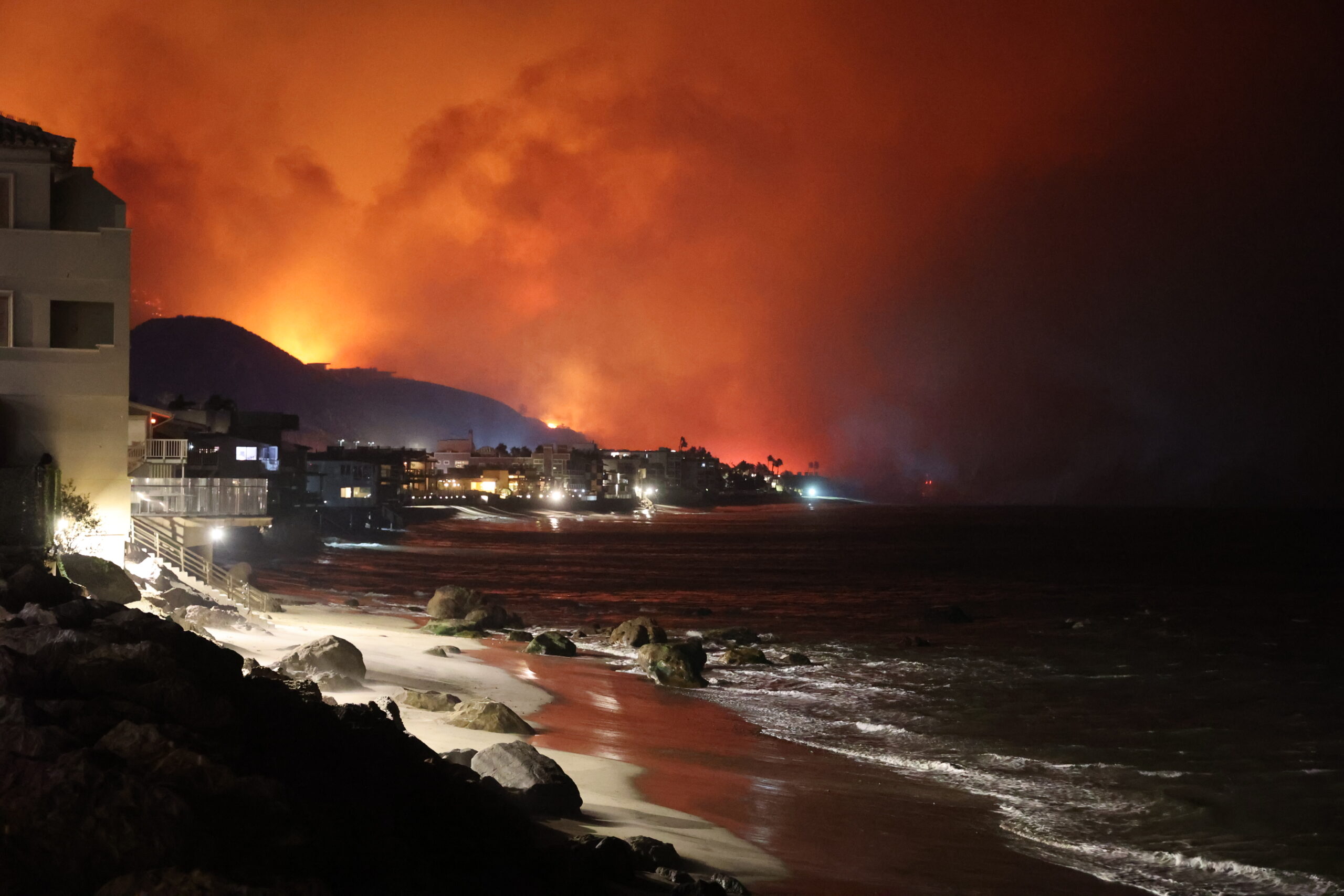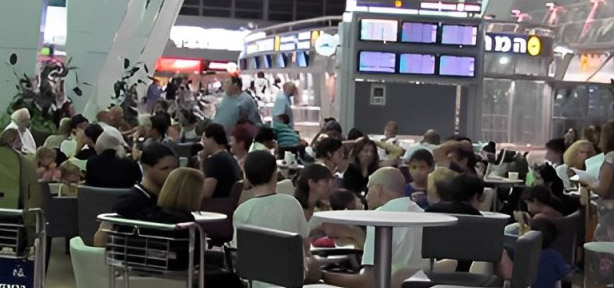
In films, fires are the hallmark of apocalyptic scenes—burnt-out vehicles, scorched earth where homes and farms once stood, and a horizon of general barrenness. This is the current scene for much of Los Angeles, the famous city in southern California known for Hollywood film and TV studios, celebrity sightings, and awe-inspiring natural landscapes.
On the morning of January 7, a wildfire broke out in the Pacific Palisades, an upscale, hilly, partially coastal neighbourhood on the west side of the city. The blazes quickly spread, and mass evacuations caused traffic gridlock, forcing many residents to abandon their vehicles and flee on foot. Within hours, the fire had overtaken 1,200 acres, and California Governor Gavin Newsom declared a state of emergency.
That same evening, about 70 km east of the Palisades, the Eaton fire broke out in the neighbourhood of Altadena, and within a few hours, another blaze was reported in the Sylmar neighbourhood, called the Hurst Fire.
At the time of writing, the Palisades Fire is 43% contained, impacting 23,713 acres, while the Eaton Fire is 73% contained, affecting 14,117 acres, and the Hurst Fire is fully contained, having burned 799 acres.
Los Angeles County is no stranger to wildfires, but a combination of factors made these blazes particularly devastating. Between May and January, the region received only 0.29 inches (0.74 centimetres) of rain. That, combined with high Santa Ana winds coming in from the northeast, created deadly conditions. New York Times meteorologist Judson Jones stated that any small spark could have started the blazes, from a cigarette igniting a patch of grass to a chain connected to a trailer creating a spark. Dry conditions made the area a tinderbox.
Los Angeles has a semi-arid climate, and southern California has a history of wildfires and even controlled burns to reduce the buildup of flammable vegetation and to shift soil nutrients. However, fires have grown worse for a few reasons. Invasive plants, such as non-native palms, English ivy, giant reed, and eucalyptus, are highly flammable and ubiquitous in southern California. They have consistently fed the fires and made them harder to contain.
Climate change has contributed to what climate scientists call “weather whiplash,” or dramatic shifts in opposing weather conditions. Last year, LA had a record flooding, and this winter has seen barely any rainfall. The Santa Ana winds occurred at hurricane-force speed and made it more difficult for emergency personnel to contain the blazes. Also, given that LA County is a coveted location with high housing prices and beautiful landscapes, developers have continued to build on land with a high burn risk. Houses then become fuel for the fires.
The disaster response has put a spotlight on California’s equity issues, such as rich homeowners hiring private firefighters to protect their homes, wealthy business owners securing disproportionate access to public water, and low-paid prisoners accounting for over 1,100 of the firefighters working to contain the blazes.
An issue the fires have put into stark relief is homeowners’ insurance. CBS News reported that 6 months before the Palisades Fire started, State Farm, one of the country’s largest insurers, dropped approximately 1,600 policies in the Pacific Palisades neighbourhood. Insurers are leaving many states as climate change increases disaster risks. Two other large insurance firms, Allstate and Farmers, dropped many California homeowner policies or halted underwriting. When this happens, residents are forced to use the state-backed “insurer of last resort,” which in California is FAIR, which offers basic coverage for properties in high-risk areas. Amid concern that insurers would again drop homeowners in the state, California Governor Gavin Newsom announced on X, “California is preventing insurance companies from cancelling home coverage for LA wildfire victims in impacted zip codes over the next year. The folks in these communities have suffered enough. They should not have to deal with the stress of home insurance on top of it all.”
Given that the fires occurred just before the inauguration of President-elect Donald Trump, Californians are concerned about federal aid. Many Republican lawmakers are calling for there to be “strings attached” to disaster aid for the historically liberal state. Conservatives are calling for the scrapping of DEI (diversity, equity, and inclusion) initiatives, which they claim allow for less qualified candidates to take on top positions and distract from public safety. However, President Biden has approved funding to deal with the disaster through FEMA (Federal Emergency Management Agency).
Between January 7-14, 12 fires broke out in the Los Angeles area. Wildfires will continue to be a problem for the region, but the record-breaking nature of these blazes may cause local policymakers to rethink development practices and disaster management. The disaster is forcing homeowners to reassess where they want to live, as many will be unable to afford to rebuild. Already, communities have come together to help one another cope with the destruction and brace for potentially more fires in the coming week. LA will forever be changed, but its allure endures.
Photo: Scene from the Palisades Fire, Los Angeles, California, captured on January 8
(Credit: WikiCommons)
Sarah Sakeena Marshall


